Views for Days
The Ultimate Challenge
El Capitan’s iconic granite walls dominate the west end of Yosemite Valley. At more than 3,000 feet (900+ m) above the valley floor, it is 2.5 times as tall as the Empire State Building, or more than 3 times as high as the top of the Eiffel Tower. The view of El Capitan is a beacon for visitors, a muse for photographers, and climbing El Capitan is one of the world’s ultimate challenges for rock climbers adventurers.
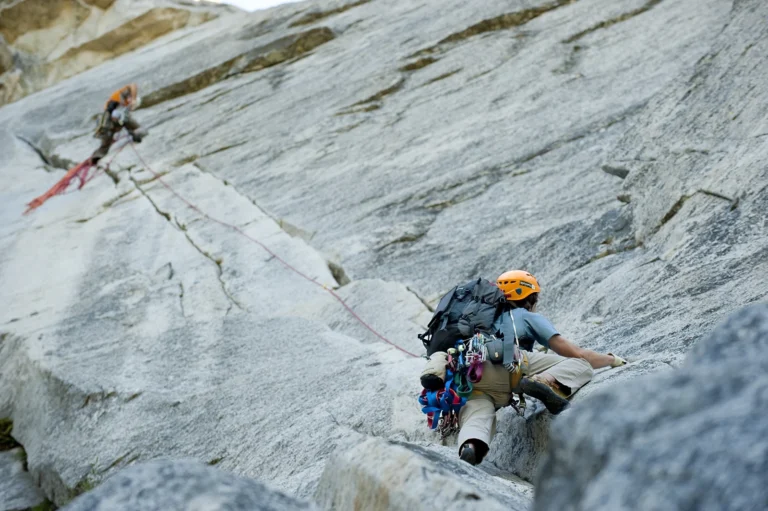
El Capitan is known as the mecca of modern rock climbing and was thrust into the limelight recently through a few jaw-dropping films. Maybe you’ve heard of Alex Honnold’s bleeding-edge ascent of El Capitan without any ropes for protection in the Oscar-winning film “Free Solo,” , Freesolo. Or maybe you watched the drama of Tommy Caldwell and Kevin Jorgeson’s partnership on pioneering a new free route, the Dawn Wall climb, in the film of the same name, and wondered what your own impossible challenge or “Dawn Wall” might be. No matter how you came to know of El Capitan, find your own adventure on the sheer granite face of one of Yosemite’s most iconic landmarks with one of the mountain’s many legendary routes.
Free Solo, Dawn Wall & More Climbing Stories
These El Capitan climbing stories were recently made into movies, but the stories of characters, adventure, teamwork, and bravery go far beyond that. Personal stories of triumphing over fear and forging friendships and partnerships by struggling together to accomplish something hard play out on a regular basis on Yosemite’s steep walls.
If you want to make your own stories, go rock climbing with the Yosemite Mountaineering School. Whether it’s your first time on rock, you want to make the transition from indoor to outdoor climbing, or you’re ready to take on El Capitan itself, Yosemite Mountaineering School can connect you with a guide that can help you, and will probably have a few personal stories they would share with you as well. For more stories, be sure to visit the Yosemite Climbing Association Museum & Gallery in Mariposa.
El capitan routes
El Capitan climbing was first conquered in 1957 by Warren Harding, who spent 45 days on the face using fixed ropes and gear on aid the most fabled climbing route, known as “The Nose.” Since then, Yosemite rock climbing has grown into hundreds of routes with stunning views of the valley. We highly recommend getting a rock climbing guide book before visiting and planning out the route you want to ascend in advance.
For those who want to get to the top of Yosemite’s icon without climbing or driving, there is an option to walk to the top. The El Capitan trail is one of the most challenging hikes in Yosemite and both, incredibly exhausting and satisfying to conquer. Because it is so challenging, it is also one of the quietest trails in Yosemite, which adds to its appeal. The El Capitan hiking trail covers just under 20 miles and the elevation is about 5,200 feet.
The time needed to hike to the top of El Capitan is between 8-12 hours (including the Eagle Peak side trail), requiring an early start if you want to get home before sunset. The descent down the Upper Yosemite Falls trail should not be underestimated either, with relentlessly steep trails that are covered with slippery grit and sand.
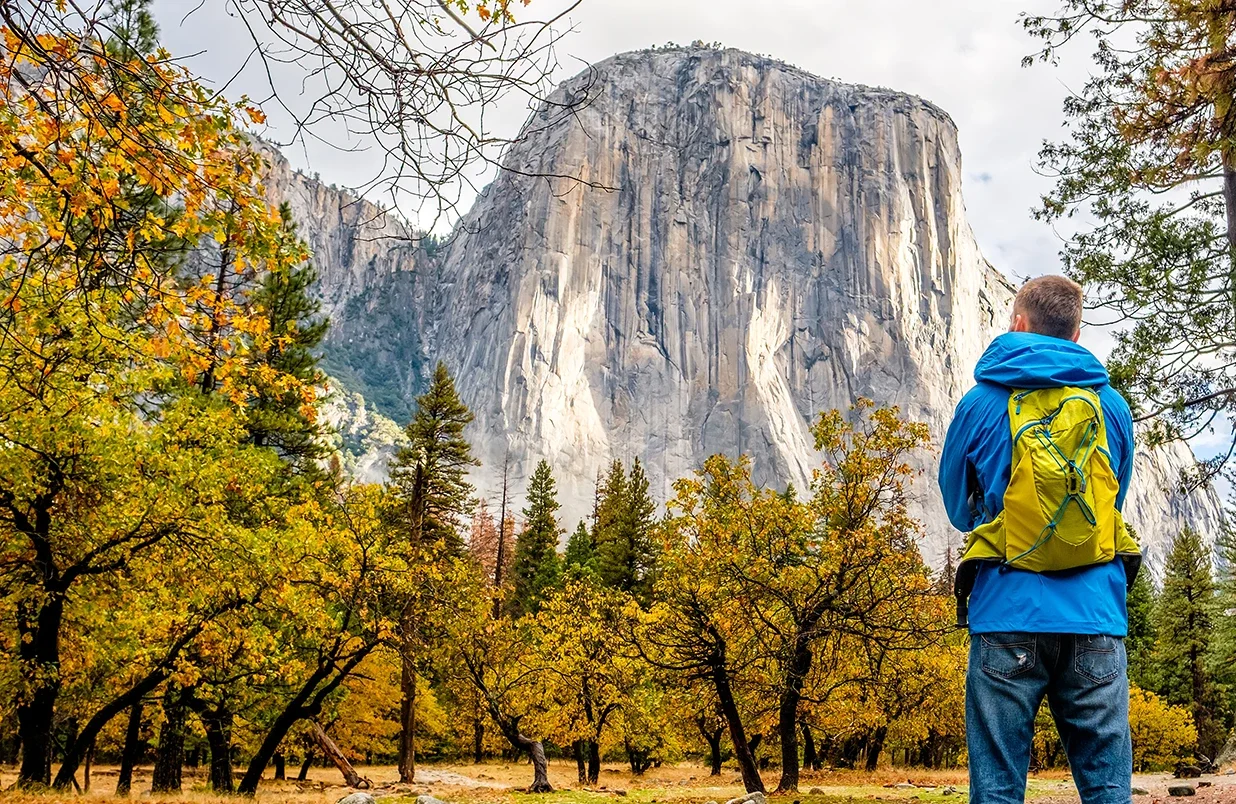
Honestly, it’s hard to pick one best place to view “El Cap.” Due to its size, it’s part of many of Yosemite’s iconic views. Here are just a few.
Bridalveil Straight – As you drive into Yosemite Valley and you see El Capitan on the left, there are long pull-outs on both sides of the road for people to stop and admire the view. Please be considerate of other drivers and pull completely off the road. See if you can spot the heart on El Capitan – a spot where the granite features resemble a heart in the middle of the granite cliff. This is also a great angle to see Bridalveil Fall from fairly close, hence the name.
Tunnel View – Head south on Highway Hwy 41 toward Glacier Point, or Wawona, to climb a short distance off the valley floor and to see one of the must-stop vantage points in Yosemite, Tunnel View. El Capitan is unmistakable as the giant rock formation on the left. It’s also provides a great view of Bridalveil Fall on the right and Half Dome way in the back.
El Cap Meadow – On your way back out of the valley, the road passes right in front of the base of El Capitan at El Cap Straight, and there is a pull-out on the left side of the road so that you can stop and take a look from up close. Follow up your visit to El Cap with a trip to the California State Mining and Mineral Museum to learn more about minerals and rocks in Yosemite.
Note: El Capitan meadow is currently under restoration, so please look from one of the viewing areas close to the road, or if you want to walk back into the meadow, use the trail on the eastern edge,
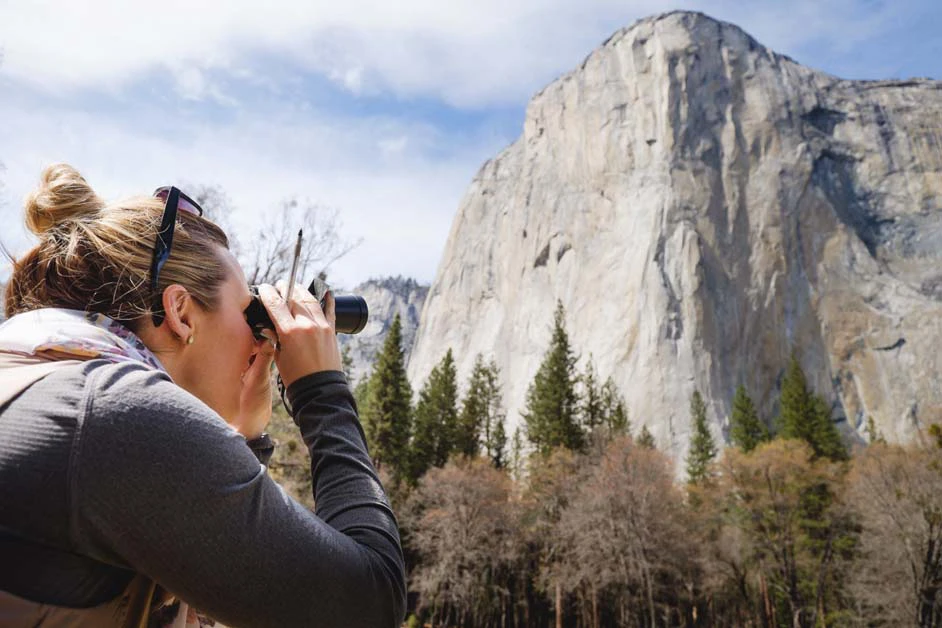
El Capitan Picnic Area
One of the best and most convenient places to take incredible pictures from is the El Capitan Picnic Area, which is located on Northside Drive right in front of the majestic granite face. It is a scenic spot from which you can watch big wall climbing at its finest. The picnic area is usually available from dawn to dusk and available on a first-come, first-served basis.
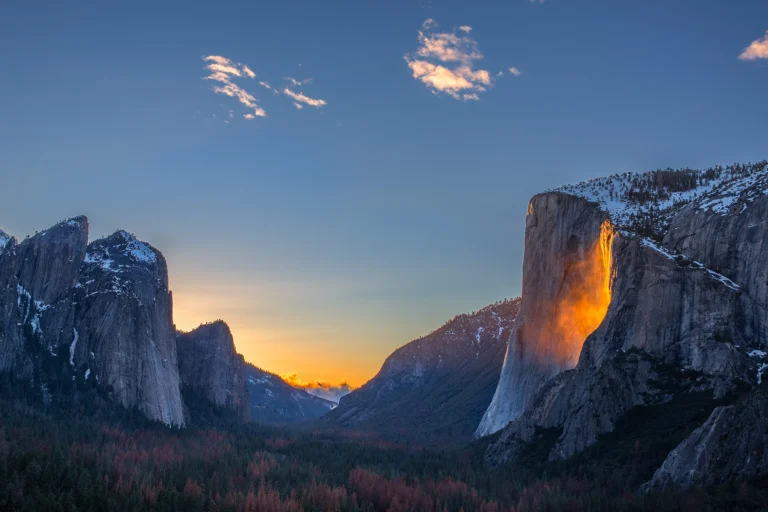
In mid- to late-February, El Capitan is home to a now-famous light show of Horsetail Fall, sometimes simply called “the Firefall” or “the Horsetail Firefall.” To see a spectacular firefall, three things need to come together. First, the angle of the sun, which is right on in late February. Second, water in the Horsetail Fall, which can be scarce in dry years. Lastly, a clear evening is required for the light to reflect in Horsetail Fall. Hundreds of people travel have come from all over in hopes of seeing this small ephemeral fall on El Capitan’s eastern flank turn molten gold with the setting sun.
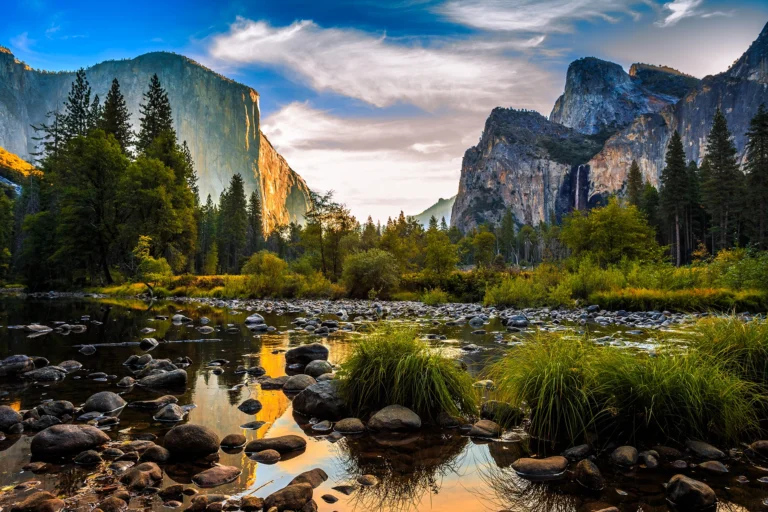
Anytime, really. El Capitan is located in Yosemite Valley and is therefore accessible year-round, and majestic in all seasons.
For photography, stormy winter days often produce the most interesting light, with dramatic clouds swirling about the cliff face. This is true for many of Yosemite’s cliffs and large features.
If you’re specifically looking for climbers, there will be some in all seasons. However, there is a spring and fall “big-wall climbing season” in Yosemite when the temperatures aren’t too warm or too cold, and you’ll find most climbers on the wall during those times.
Frequently asked questions about El Capitan
El Capitan is 7,573 feet or 2,308 meters high.
El Capitan is Spanish for The Captain, and you only need to look at its broad buttress and commanding position at the west end of Yosemite Valley to guess why it might be called that.
El Capitan is one of the most iconic rock formations in the world with more than 3,000 vertical feet of sheer granite. It is also made famous by recent rock climbing movies, such as “Dawn Wall” and “Free Solo.”
Alex Honnold is an American professional rock climber who became the first person to free solo El Capitan in June 2017, which was turned into the movie, “Free Solo.”
Free solo climbing is a form of technical rock climbing that is performed without the aid of a rope or other protective equipment. Climbers are only using their shoes and climbing chalk to climb their route.
The hike to the top of El Capitan is strenuous and only recommended for experienced hikers.
The closest parking is just across the street from the base of El Capitan. If you’re planning to leave Yosemite Valley, parallel park along the left hand side of the road with excellent views of El Capitan right from your car. If you’re planning to return to Yosemite Valley, stay in the left lane, cross the bridge and find parking on either side of the road there. This allows you to cross over and head back west into other Yosemite Valley destinations without needing to take a longer loop to Pohono Bridge.

